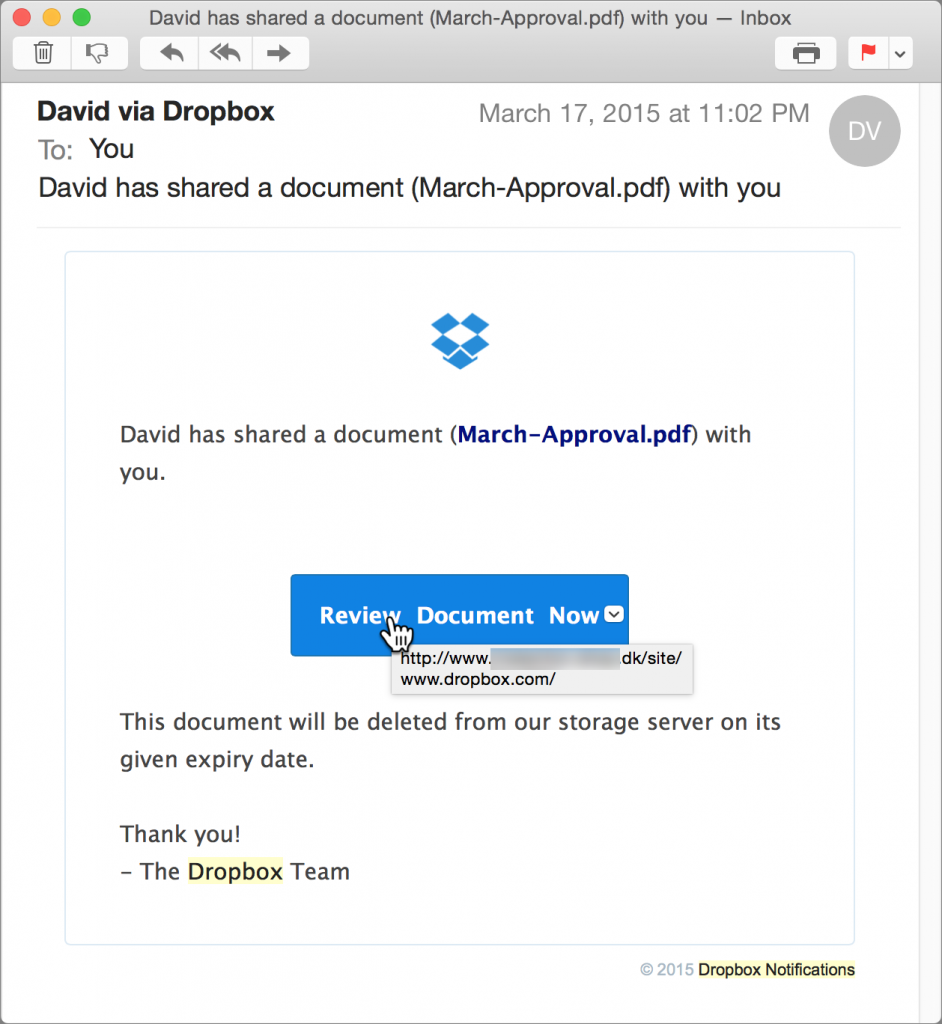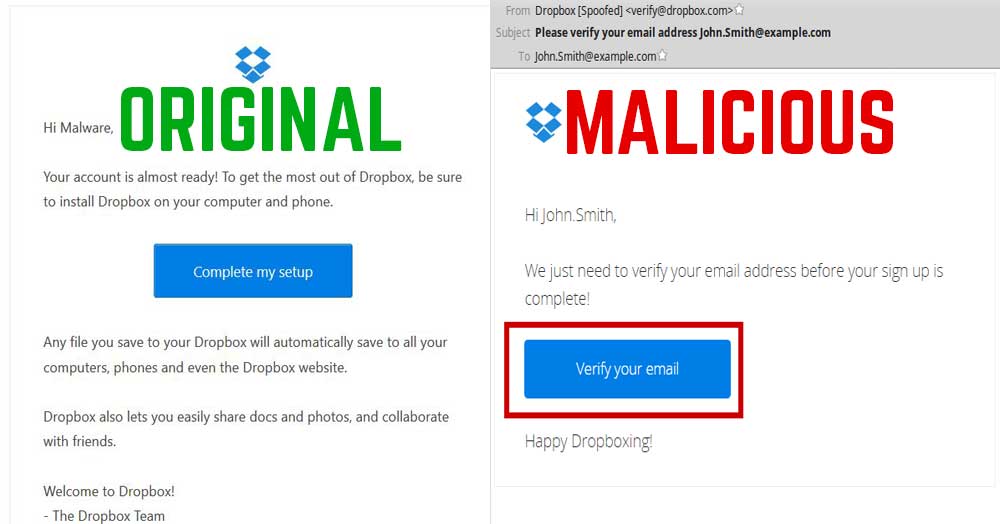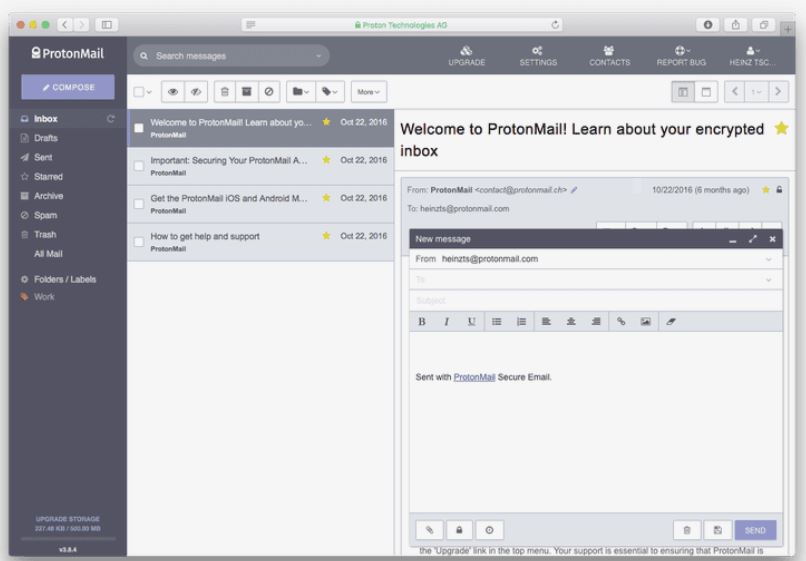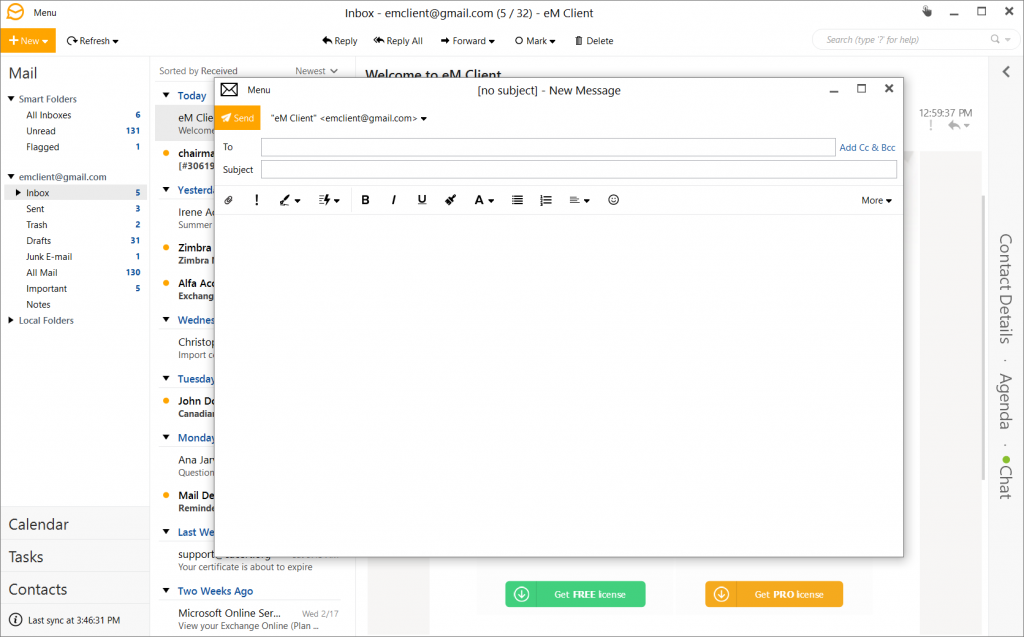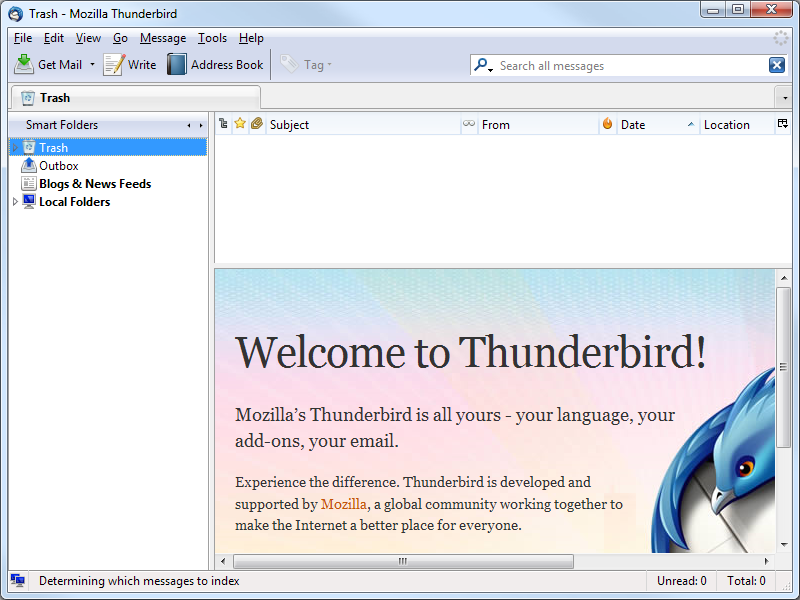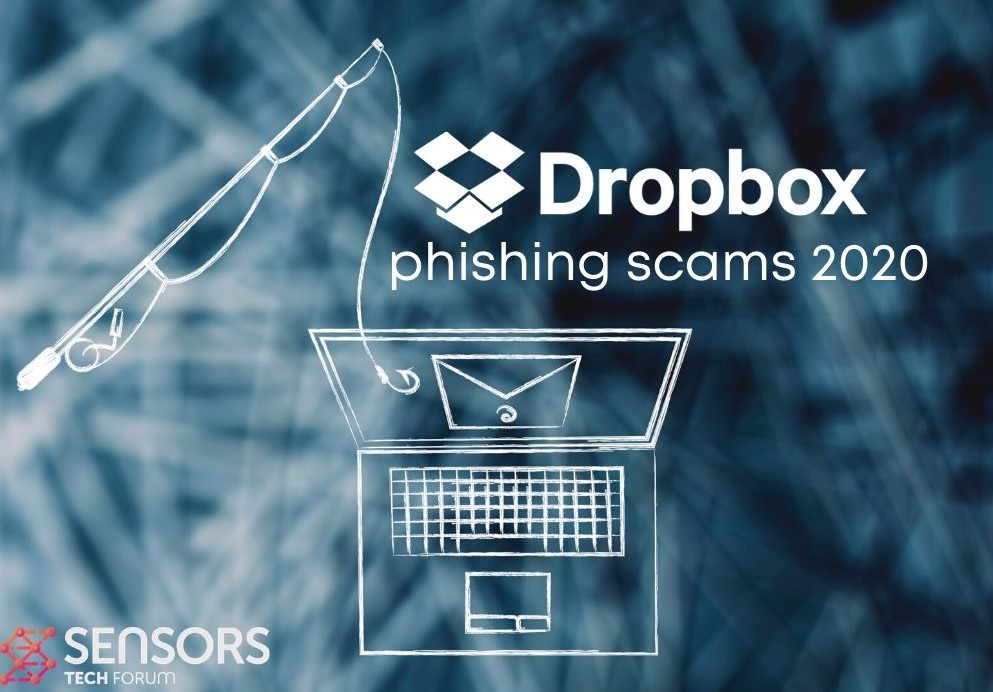 This article has been created in order to help you by explaining what are exactly Dropbox phishing e-mails and how you can block them completely from your computer.
This article has been created in order to help you by explaining what are exactly Dropbox phishing e-mails and how you can block them completely from your computer.
New form of e-mail spam messages has been identified, connected with messages which resemble different reputable companies. One of those companies is Dropbox which is often involved in phishing e-mails that use it’s name to get victims to click on suspicious e-mails in order to become infected via Dropbox malware. In addition to this, the Dropbox e-mails may not all be fake, and most of those may also lead you to the actual Dropbox website where most victims usually download infection files of different malware. In this article we will explain more about how to Identify original from fake Dropbox e-mails and learn how to block the fake ones directly on your e-mail address.

Threat Summary
| Name | Dropbox Malware |
| Type | Dropbox E-mail Threats |
| Short Description | Aims to phish for information by leading the victim to fake websites or directly infect computers with malware via JavaScript or infection files. |
| Symptoms | E-mails from Dropbox which do not lead to the actual Dropbox domain or cause browser redirects or downloaded files. |
| Distribution Method | Spam Emails, Email Attachments, Executable files, JavaScript |
| Detection Tool |
See If Your System Has Been Affected by malware
Download
Malware Removal Tool
|
User Experience | Join Our Forum to Discuss Dropbox Malware. |
July 2020 New Dropbox Phishing Scam Campaign
Dropbox phishing scams continue on even in July 2020 when a new campaign has been detected by security experts. This is a bulk campaign that targets all Internet users — both existing customers and prospective users can receive the messages.
The phishing messages can also be delivered via websites, they can be of several major types:
- Phishing Landing Pages — When they are clicked on the visitors will be redirected to the message.
- Browser Hijacker Pages — If browser hijackers have been installed in a web browser they will point to a specially designed page that is accessed via a special URL programmed in them.
- Hacked Sites — Criminals can hijack legitimate sites and insert links to the notification pages.
- Social Networks — Posts containing links can lead to the notification pages. The content can also be sent in group and private messages.
The Dropbox phishing emails will lead to a login portal page that will will prompt the users to login to the service via existing online credentials. When the victims enter in their usernames and password combinations they will be forwarded to the hacker controllers. Supported services are the following:
Gmail, AOL, Outlook, Office 365, Yahoo and other email hosting services
As always the hackers have copied the design and layout of Dropbox so that it is very difficult to differentiate a legitimate message from a fake one.

How to Identify Phishing E-mail Scams Spam by Dropbox
Usually most of the phishing e-mails that are sent with relations to Dropbox are masked very cleverly. In one case, the user has seen an e-mail from another user David, claiming a new file has been shared with the targeted victim. The e-mail is very well designed as you see in the image below and it is in the same theme as original Dropbox e-mails appear like:
This particular user, however has checked the web link before actually clicking on it and has established that it leads to a phishing server, located in Denmark, which has nothing in relation to the actual Dropbox web page. Usually, such websites aim to phish for information like your password, username in order to login to your Dropbox account. From there, the cyber-criminals aim to enter to your e-mail by trying the same password which you have written and in case the password is the same they may also use it to remove your two-factor authentication via phone and compromise your other online accounts, such as Facebook, Instagram and even more serious ones, like PayPal, for example, which can be used to shop online in your name plus directly steal your money. This is why, it is strongly advisable to focus on checking the URLs, which are on those documents, since it may prevent a disaster waiting to happen.

How to Identify Malicious E-mails Related to Dropbox
Besides phishing e-mails there is also another case with Dropbox which has concerned us over the last few months. This case involves using the Dropbox services in malspam (malicious e-mails) messages in attacks, involving malware, primarily ransomware viruses. In one such instance, the e-mail asks from victims to verify via e-mail by clicking on a confirmation link. The verification e-mail is extremely close to the original e-mails for Dropbox account activation as you can see from the comparison below:
When the victim clicks on this e-mail, a redirection immediately takes place, where a malicious JavaScript file is downloaded on the victim PC. If you see a “Jscript Script File” being downloaded, either automatically shut down your computer or stop your internet, since chances are your PC is about to be compromised almost certainly. And if the e-mails lead you to a file that is archived and you do expect a newly shared Dropbox file, we would suggest that you check the file by uploading it on an online file scanner which will check it without you having to activate the file. One such service that checks files is ZipeZip and you can use it to check any files you believe are suspicious before actually opening them.

How to Block Dropbox and Other Spam, Scamming and Phishing E-Mails
In order to stop Dropbox and other Spam e-mail messages, the first thing you should do is download a reputable e-mail managing software, instead of using your original mail vendor online. The main reason for this is that most e-mail managers have an active blacklist which is automatically updated on a daily basis and that list in combination with the features they offer, such as image blocking until you allow it, makes it the perfect software to have when you open a dangerous e-mail, because you will be able to see it without any risk whatsoever, since some mails can even infect a computer simply by being opened. Here are some reputable e-mail software services which we recommend using:
ProtonMail
ProtonMain represents a free and an open-source software which uses it’s custom e-mail, that is encrypted. So besides anonymous mail, based in Switzerland, you also receive the ability to work with it from any computer and even via online applications. The most important feature, realted to these e-mails is that even if attackers know your password, they have to battle with encryption to which only specific devices that you are using have access to. Really legitimate and reuptable service, however you have to create a new e-mail account as a downsite.
eM Client
Often voted the best email client which has support for range of e-mail providers, this service can surely make it so that you wont receive spam messages in the future as well.
Microsoft Outlook
Probably one of the easiest to use services for e-mail, often among companies, the Microsoft Outlook service is the most user friendly of the bunch even though it has had it’s issues over time, Microsoft has made sure that they warn you in case your account has been compromised.
Mozilla Thunderbird
Even though it has less security features than the other software here, Thunderbird is a great tool that aims to help you in a variety of situations, Thunderbird makes sure to remain as secure and as user friendly as possible while offering you fast and simple service.

How to Remove Malware, Compromised Your PC Via Dropbox or Other Phishing E-mails
In case you have already fallen trap to the Dropbox e-mails and the risks that they carry, we would strongly suggest to take defensive measures first and to immediately change all of the web account passwords you have saved or typed on your web browser during and after the time of infection according to your best bet. Make sure you change them from a computer or a smartphone, you believe is safe. In addition to this, we also recommend that you focus following the removal instructions down below in order to remove any malware that may currently be residing on your computer. If you do not know more information about the malware infecting your PC as a result of opening a Dropbox account, experts strongly advise to use an advanced anti-malware software, since such will automatically identify and remove all malicious files and objects created by it and protect your PC against future infections too.
- Windows
- Mac OS X
- Google Chrome
- Mozilla Firefox
- Microsoft Edge
- Safari
- Internet Explorer
- Stop Push Pop-ups
How to Remove Dropbox Malware from Windows.
Step 1: Scan for Dropbox Malware with SpyHunter Anti-Malware Tool



Step 2: Boot Your PC In Safe Mode





Step 3: Uninstall Dropbox Malware and related software from Windows
Here is a method in few easy steps that should be able to uninstall most programs. No matter if you are using Windows 10, 8, 7, Vista or XP, those steps will get the job done. Dragging the program or its folder to the recycle bin can be a very bad decision. If you do that, bits and pieces of the program are left behind, and that can lead to unstable work of your PC, errors with the file type associations and other unpleasant activities. The proper way to get a program off your computer is to Uninstall it. To do that:


 Follow the instructions above and you will successfully uninstall most programs.
Follow the instructions above and you will successfully uninstall most programs.
Step 4: Clean Any registries, Created by Dropbox Malware on Your PC.
The usually targeted registries of Windows machines are the following:
- HKEY_LOCAL_MACHINE\Software\Microsoft\Windows\CurrentVersion\Run
- HKEY_CURRENT_USER\Software\Microsoft\Windows\CurrentVersion\Run
- HKEY_LOCAL_MACHINE\Software\Microsoft\Windows\CurrentVersion\RunOnce
- HKEY_CURRENT_USER\Software\Microsoft\Windows\CurrentVersion\RunOnce
You can access them by opening the Windows registry editor and deleting any values, created by Dropbox Malware there. This can happen by following the steps underneath:


 Tip: To find a virus-created value, you can right-click on it and click "Modify" to see which file it is set to run. If this is the virus file location, remove the value.
Tip: To find a virus-created value, you can right-click on it and click "Modify" to see which file it is set to run. If this is the virus file location, remove the value.
Video Removal Guide for Dropbox Malware (Windows).
Get rid of Dropbox Malware from Mac OS X.
Step 1: Uninstall Dropbox Malware and remove related files and objects





Your Mac will then show you a list of items that start automatically when you log in. Look for any suspicious apps identical or similar to Dropbox Malware. Check the app you want to stop from running automatically and then select on the Minus (“-“) icon to hide it.
- Go to Finder.
- In the search bar type the name of the app that you want to remove.
- Above the search bar change the two drop down menus to “System Files” and “Are Included” so that you can see all of the files associated with the application you want to remove. Bear in mind that some of the files may not be related to the app so be very careful which files you delete.
- If all of the files are related, hold the ⌘+A buttons to select them and then drive them to “Trash”.
In case you cannot remove Dropbox Malware via Step 1 above:
In case you cannot find the virus files and objects in your Applications or other places we have shown above, you can manually look for them in the Libraries of your Mac. But before doing this, please read the disclaimer below:



You can repeat the same procedure with the following other Library directories:
→ ~/Library/LaunchAgents
/Library/LaunchDaemons
Tip: ~ is there on purpose, because it leads to more LaunchAgents.
Step 2: Scan for and remove Dropbox Malware files from your Mac
When you are facing problems on your Mac as a result of unwanted scripts and programs such as Dropbox Malware, the recommended way of eliminating the threat is by using an anti-malware program. SpyHunter for Mac offers advanced security features along with other modules that will improve your Mac’s security and protect it in the future.
Video Removal Guide for Dropbox Malware (Mac)
Remove Dropbox Malware from Google Chrome.
Step 1: Start Google Chrome and open the drop menu

Step 2: Move the cursor over "Tools" and then from the extended menu choose "Extensions"

Step 3: From the opened "Extensions" menu locate the unwanted extension and click on its "Remove" button.

Step 4: After the extension is removed, restart Google Chrome by closing it from the red "X" button at the top right corner and start it again.
Erase Dropbox Malware from Mozilla Firefox.
Step 1: Start Mozilla Firefox. Open the menu window:

Step 2: Select the "Add-ons" icon from the menu.

Step 3: Select the unwanted extension and click "Remove"

Step 4: After the extension is removed, restart Mozilla Firefox by closing it from the red "X" button at the top right corner and start it again.
Uninstall Dropbox Malware from Microsoft Edge.
Step 1: Start Edge browser.
Step 2: Open the drop menu by clicking on the icon at the top right corner.

Step 3: From the drop menu select "Extensions".

Step 4: Choose the suspected malicious extension you want to remove and then click on the gear icon.

Step 5: Remove the malicious extension by scrolling down and then clicking on Uninstall.

Remove Dropbox Malware from Safari
Step 1: Start the Safari app.
Step 2: After hovering your mouse cursor to the top of the screen, click on the Safari text to open its drop down menu.
Step 3: From the menu, click on "Preferences".

Step 4: After that, select the 'Extensions' Tab.

Step 5: Click once on the extension you want to remove.
Step 6: Click 'Uninstall'.

A pop-up window will appear asking for confirmation to uninstall the extension. Select 'Uninstall' again, and the Dropbox Malware will be removed.
Eliminate Dropbox Malware from Internet Explorer.
Step 1: Start Internet Explorer.
Step 2: Click on the gear icon labeled 'Tools' to open the drop menu and select 'Manage Add-ons'

Step 3: In the 'Manage Add-ons' window.

Step 4: Select the extension you want to remove and then click 'Disable'. A pop-up window will appear to inform you that you are about to disable the selected extension, and some more add-ons might be disabled as well. Leave all the boxes checked, and click 'Disable'.

Step 5: After the unwanted extension has been removed, restart Internet Explorer by closing it from the red 'X' button located at the top right corner and start it again.
Remove Push Notifications from Your Browsers
Turn Off Push Notifications from Google Chrome
To disable any Push Notices from Google Chrome browser, please follow the steps below:
Step 1: Go to Settings in Chrome.

Step 2: In Settings, select “Advanced Settings”:

Step 3: Click “Content Settings”:

Step 4: Open “Notifications”:

Step 5: Click the three dots and choose Block, Edit or Remove options:

Remove Push Notifications on Firefox
Step 1: Go to Firefox Options.

Step 2: Go to “Settings”, type “notifications” in the search bar and click "Settings":

Step 3: Click “Remove” on any site you wish notifications gone and click “Save Changes”

Stop Push Notifications on Opera
Step 1: In Opera, press ALT+P to go to Settings.

Step 2: In Setting search, type “Content” to go to Content Settings.

Step 3: Open Notifications:

Step 4: Do the same as you did with Google Chrome (explained below):

Eliminate Push Notifications on Safari
Step 1: Open Safari Preferences.

Step 2: Choose the domain from where you like push pop-ups gone and change to "Deny" from "Allow".
Dropbox Malware-FAQ
What Is Dropbox Malware?
The Dropbox Malware threat is adware or browser redirect virus.
It may slow your computer down significantly and display advertisements. The main idea is for your information to likely get stolen or more ads to appear on your device.
The creators of such unwanted apps work with pay-per-click schemes to get your computer to visit risky or different types of websites that may generate them funds. This is why they do not even care what types of websites show up on the ads. This makes their unwanted software indirectly risky for your OS.
What Are the Symptoms of Dropbox Malware?
There are several symptoms to look for when this particular threat and also unwanted apps in general are active:
Symptom #1: Your computer may become slow and have poor performance in general.
Symptom #2: You have toolbars, add-ons or extensions on your web browsers that you don't remember adding.
Symptom #3: You see all types of ads, like ad-supported search results, pop-ups and redirects to randomly appear.
Symptom #4: You see installed apps on your Mac running automatically and you do not remember installing them.
Symptom #5: You see suspicious processes running in your Task Manager.
If you see one or more of those symptoms, then security experts recommend that you check your computer for viruses.
What Types of Unwanted Programs Are There?
According to most malware researchers and cyber-security experts, the threats that can currently affect your device can be rogue antivirus software, adware, browser hijackers, clickers, fake optimizers and any forms of PUPs.
What to Do If I Have a "virus" like Dropbox Malware?
With few simple actions. First and foremost, it is imperative that you follow these steps:
Step 1: Find a safe computer and connect it to another network, not the one that your Mac was infected in.
Step 2: Change all of your passwords, starting from your email passwords.
Step 3: Enable two-factor authentication for protection of your important accounts.
Step 4: Call your bank to change your credit card details (secret code, etc.) if you have saved your credit card for online shopping or have done online activities with your card.
Step 5: Make sure to call your ISP (Internet provider or carrier) and ask them to change your IP address.
Step 6: Change your Wi-Fi password.
Step 7: (Optional): Make sure to scan all of the devices connected to your network for viruses and repeat these steps for them if they are affected.
Step 8: Install anti-malware software with real-time protection on every device you have.
Step 9: Try not to download software from sites you know nothing about and stay away from low-reputation websites in general.
If you follow these recommendations, your network and all devices will become significantly more secure against any threats or information invasive software and be virus free and protected in the future too.
How Does Dropbox Malware Work?
Once installed, Dropbox Malware can collect data using trackers. This data is about your web browsing habits, such as the websites you visit and the search terms you use. It is then used to target you with ads or to sell your information to third parties.
Dropbox Malware can also download other malicious software onto your computer, such as viruses and spyware, which can be used to steal your personal information and show risky ads, that may redirect to virus sites or scams.
Is Dropbox Malware Malware?
The truth is that PUPs (adware, browser hijackers) are not viruses, but may be just as dangerous since they may show you and redirect you to malware websites and scam pages.
Many security experts classify potentially unwanted programs as malware. This is because of the unwanted effects that PUPs can cause, such as displaying intrusive ads and collecting user data without the user’s knowledge or consent.
About the Dropbox Malware Research
The content we publish on SensorsTechForum.com, this Dropbox Malware how-to removal guide included, is the outcome of extensive research, hard work and our team’s devotion to help you remove the specific, adware-related problem, and restore your browser and computer system.
How did we conduct the research on Dropbox Malware?
Please note that our research is based on independent investigation. We are in contact with independent security researchers, thanks to which we receive daily updates on the latest malware, adware, and browser hijacker definitions.
Furthermore, the research behind the Dropbox Malware threat is backed with VirusTotal.
To better understand this online threat, please refer to the following articles which provide knowledgeable details.














